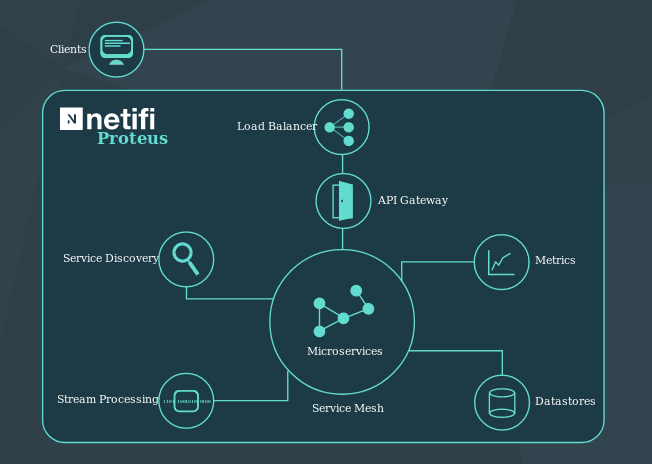 INFRA
INFRA
 INFRA
INFRA
 INFRA
INFRA
Another cloud-native microservices startup emerged from stealth mode today, backed by $2 million in a seed funding round led by Dell Technologies Capital.
Netifi Inc. is the startup in question, touting a “next-generation platform” called Proteus that’s designed to enable the development of “reactive” microservices and cloud-native software applications.
Microservices are the components of applications built using “software containers.” The central idea behind microservices is that some types of applications are easier to build and maintain when they are broken down into smaller, composable pieces that work together. Each component is continuously developed and separately maintained, and the application is then simply the sum of its constituent components. This is in contrast to a traditional, “monolithic” application developed all in one piece.
Netifi’s pitch is that much of the microservices and cloud-native development we’re seeing today is being done on outdated information technology infrastructure that’s unsuitable for this kind of work.
Robert Roeser, Netifi’s cofounder and chief executive officer, reckons that the distributed systems used to build apps today are “inherently unpredictable” with regards to their performance, and says that simply won’t do. As one example, Roeser called out the reliance on a technology called Representational State Transfer, or REST, which is used by developers to ensure their microservices can communicate with one another.
“REST has become the de facto standard for communicating between microservices, but that is not a good thing,” he told SiliconANGLE in an interview. “In fact, it’s a very bad thing.”
Roeser explained that REST is a much older technology than microservices, originally developed in 2000 in order to provide interoperability between computer systems on the Internet. REST is essentially a “hack” on top of the Hypertext Transfer Protocol that emerged during the days of traditional monolithic 3-tier applications, Roeser said, and as such it “doesn’t make sense for microservices.”
“REST is a decent solution where it makes sense, but microservices require the ability to process data as it comes (streaming data) and should be bidirectional, have application flow control, support binary data, be able to fragment requests for greater responsiveness and exchange metadata about a connection,” Roser said. “Distributed systems are difficult enough on their own. The last thing that we need is to make them more complex by using something not designed for them.”
Netifi’s Proteus platform replaces REST with an open source application protocol that’s specifically designed for microservices communications, called RSocket, which was first developed and implemented by Netflix Inc. RSocket is more efficient as it uses less overheadsto replace HTTP.
“The Netifi platform uses bidirectional application communication technology that predicts the best route to send messages, understanding latency and error rates and the ability to handle load balancing,” Roeser said.
Analyst Holger Mueller of Constellation Research Inc. told SiliconANGLE that innovations such as Netifi’s are needed as more application development moves to a microservices-based approach. He agreed that the HTTP standard is not the most elastic, especially when it comes to running dynamic or microservices platforms because it was never designed for that purpose.
“Now it comes back to innovators like Netifi to show CxOs they can implement a more efficient layer that will be able to replace trusted and proven standards such as HTTP,” Mueller said.
Netifi’s Proteus platform also provides the full gamut of application programming interface management, routing, service discovery and predictive load balancing features that developers need to create and manage microservices and cloud-native apps.
Netifi currently offers a free version of the Proteus platform that’s available now, and is planning to launch an enterprise-grade release with additional features soon. the platform can run on-premises or in the public cloud.
THANK YOU